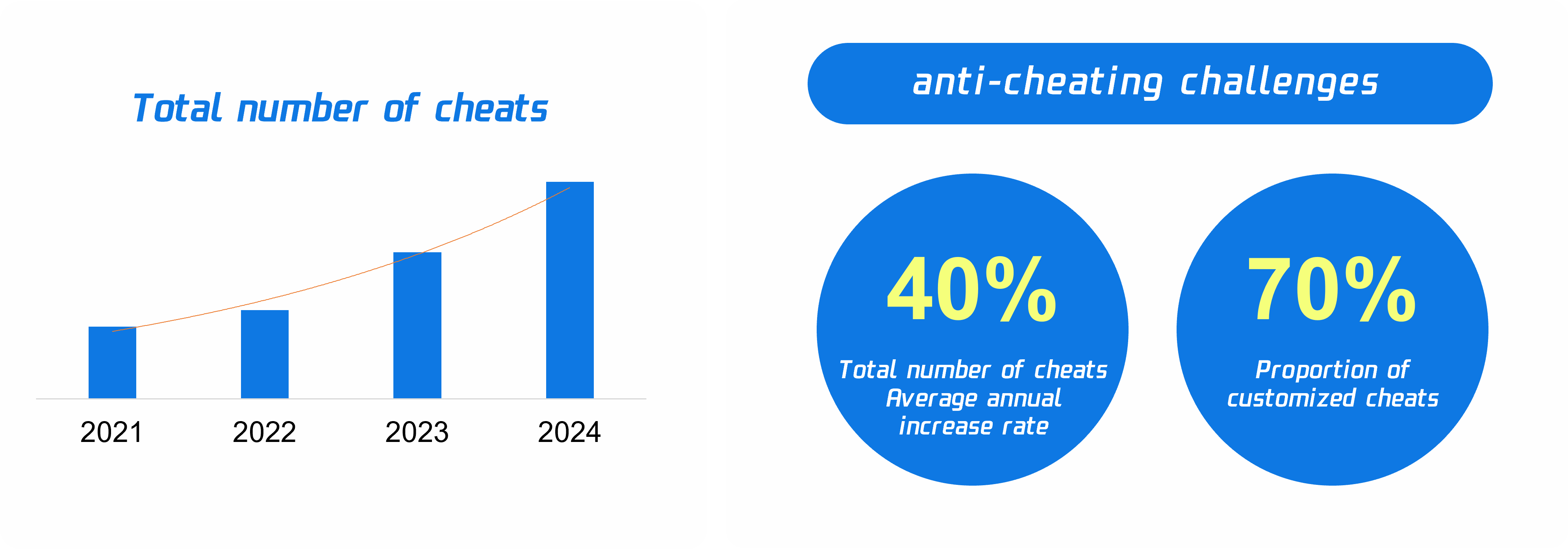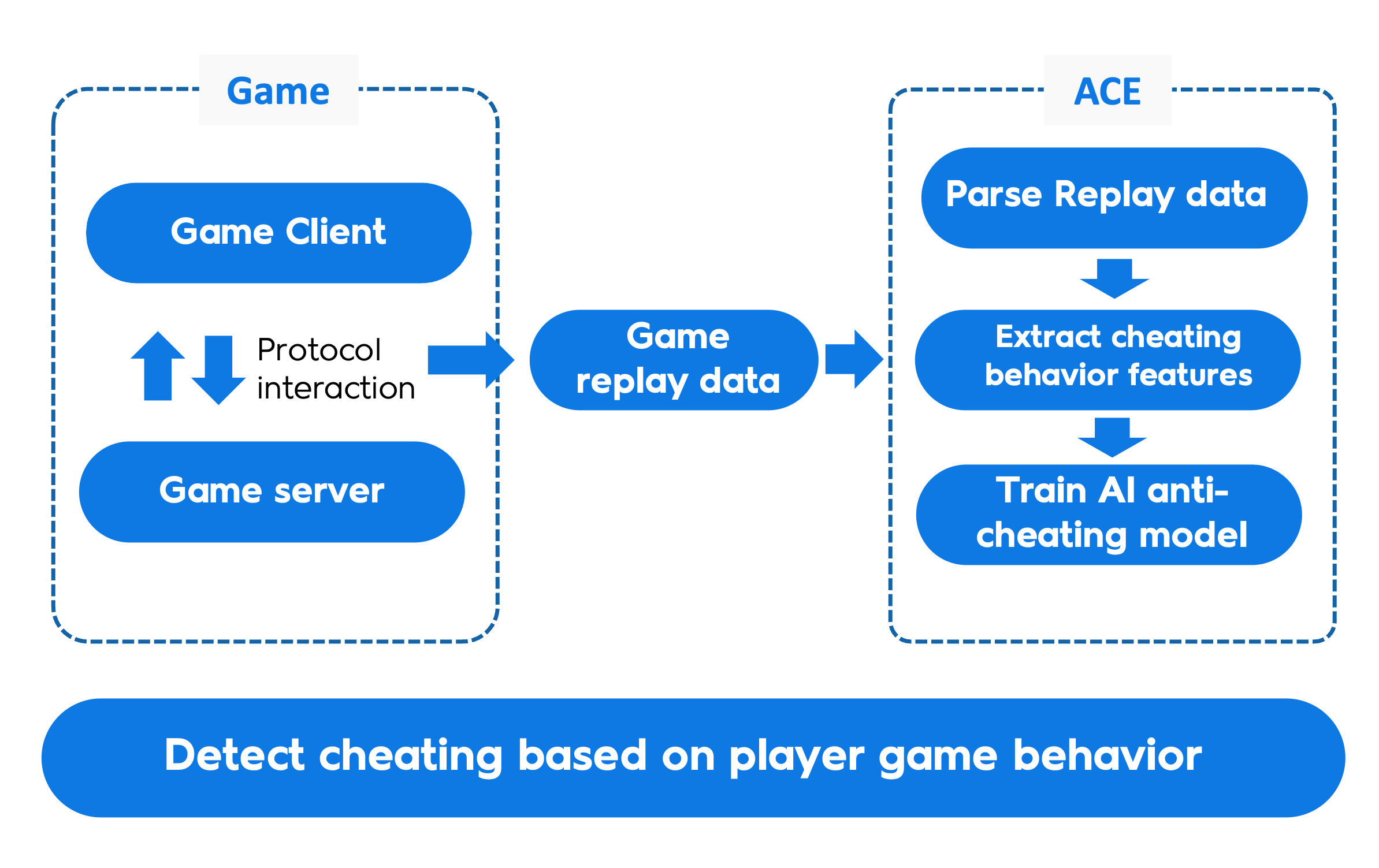Key insights from Anti-Cheat Expert (ACE) 's session at the GDC 2025 Summit: AI in Mobile Games: The Future of Anti-Cheat Innovation
Sensor Tower's latest 2025 mobile gaming report shows some promising numbers - in-app purchases climbed 4% while players are spending nearly 8% more time in their favorite games. With mobile titles capturing a growing share of both revenue and players worldwide, developers now face a subsequent challenge: the very success attracting legitimate users is also drawing harmful actors determined to exploit these thriving ecosystems.
In H1 2024, ACE detected a 14% year-over-year increase in the number of mobile game cheats, in which the share of customized cheats has risen to 97.6%. The situation has raised the bar for anti-cheat efforts.

Disadvantages of Traditional Anti-Cheat
This rapid evolution has pushed traditional anti-cheat methods to their limits.
Typically, traditional anti-cheat methods involve six steps. Starting with the collection and detection of cheat samples, the process moves on to in-depth analysis to uncover the fundamental principles and patterns at play. From there, the insights gained are used to craft a preliminary counter-strategy. This strategy is then put to the test and iteratively improved until a solid, dependable solution for tackling cheats emerges.
However, when confronted with a substantial volume of cheat samples, this approach starts to falter and becomes inefficient. The heavy reliance on client-side data reporting and detection also places traditional anti-cheat methods at a disadvantage, as many sophisticated cheats can easily bypass or disable client-side data reporting.
Given these limitations, an automated anti-cheating solution that does not rely on sample analysis becomes necessary.
The Basic Principle of AI Anti-Cheat一Replay
Unlike traditional anti-cheat methods, AI anti-cheat models are trained on replay data. Specifically, once a game session concludes, the game server automatically generates replay data, which encapsulates the sequence of player actions and behaviors throughout the session. For most games, this replay data is reported with frame-by-frame precision, capturing and preserving a wealth of detailed game information. Taking MOBA games as an example, the replay data provides a comprehensive record of each session, including player location, character attributes, skill details, and mutual visibility between players, etc.
Traditional server log recording methods simply can't manage such massive data volumes, but replay technology makes it possible. Most mobile games today use the UE engine, which offers strong support for game replays. This means that AI anti-cheat systems leveraging replay technology are compatible with the majority of current mobile games.
It's important to note that while replay data offers a wealth of information, it strictly relates to in-game actions and behaviors. Players' personal data and privacy are protected.

The Core of AI Model Training-Player Behavior Model Analysis
Based on the massive replay data, our team will further parse and preprocess the data to extract core player behavioral features, so as to spot the nuance between cheaters and common players. Ultimately, the extracted behavioral features are used to train AI anti - cheat models, enabling automated detection that doesn't rely on cheat samples.
Taking MOBA games as a telling example. Unlike cheaters, common players actively collect crucial information, such as enemy positioning so as to continuously adjust their gaming strategies and decision-making processes, while Cheaters using perspective cheats behave differently. Since they gain early access to key info like enemy positioning,when attacking, they're more poised and decisive.Once they sense enemies approaching, they may opt to retreat or conceal themselves in advance.
Analyzing these subtle in-game behavioral differences allows us to identify the various behavioral features that distinguish normal players from cheaters. Armed with these insights, we put the AI model through rigorous, repeated training using deep neural network algorithms. All to equip it with the smarts for automatic detection and judgment.

The Trends of AI Anti-Cheating
As anti-cheat measures continue to evolve, so do cheating methods. Cheaters are becoming more sophisticated and discreet. They're moving away from individual cheating and towards team-based strategies. Examples like escorting, piggybacking, and call-outs show this trend. To better conceal their cheating, they're also improving their in-game "acting" skills by deliberately imitating normal player behaviors. This poses a challenge to the player behavior detection and identification methods we've just mentioned.
To better handle these changes, AI anti-cheat systems must boost their detection abilities by developing large-scale neural networks with extra layers and parameters. This helps spot more complex and subtle behavioral differences. At the same time, as we feed replay data from different games into the AI models, we want the models to be versatile and able to generalize better to detect various forms of cheating that show up in different situations.
The fight against cheats is a protracted arms race. AI advancement has revolutionized every facet of the industry, and ACE has been at the forefront of this transformation, achieving remarkable progress and milestones. By collaborating with game developers worldwide, ACE is fostering a healthy and prosperous future for the gaming industry.

